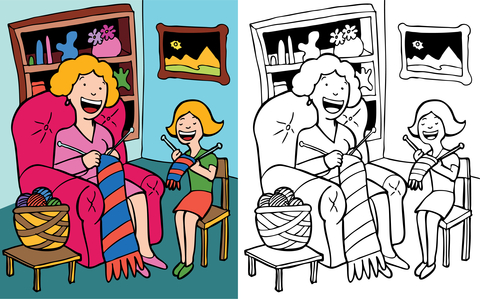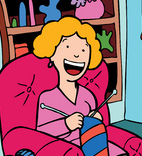Weft and Warp knitting are technical terms that describe two different types of knitting used by either machine or hand. They refer to the widths and lengths of the thread and how many needles are used. Knitting is typically done by hand, although some machines are used today. These terms are technical terms mostly used when discussing machine knitting, although weft knitting can be done by hand, too. There are many differences between weft knitting and warp knitting, and since many knitters don’t commonly know these terms, we’ll discuss them here. There is a lot to learn about weft and warp knitting, so continue reading to expand your knowledge of the ancient art of knitting.
Weft Knitting Versus Warp Knitting
Weft and warp knitting are completely different knitting techniques that result in two different types of fabrics. The most obvious difference in these two techniques is that weft is a yarn that runs back and forth, while warp is a yarn that runs up and down. Due to these different techniques, the finished product is entirely different, too. For example, weft knitting can produce shaped garments and highly drapeable fabrics while warp knitting produces only coarse yardage.
Weft Knitting
Weft knitting, which can be done by hand or machine, uses a continuous thread to form courses and loops in the fabric. This technique can produce either fabric yardage or shaped garments such as circular fabrics. Due to the fact that it uses one continuous thread to create a finished product, it is very hard to unravel and creates a very elastic and thin fabric. However, this fabric is more likely to shrink than fabric created using warp knitting, and needs to be washed and dried by hand rather than in a machine.
While weft knitting offers many more options in terms of finished products, the technique is generally more complicated and takes a longer time to complete.
There are three fundamental stitches used in weft knitting, which are:
• Plain knit
• Rib knit
• Purl knit
This knitting technique creates many of the classic knitting looks you’ve come to recognize, and is more likely used by hand knitters everywhere.
Warp Knitting
On the other side of the knitting spectrum is warp knitting. Usually knitting machines are used for this technique. It is much simpler and faster than weft knitting, which makes it more likely for commercial knitting fabrics. Another advantage to warp knitting is that the finished fabric can be washed in a machine with much less risk of shrinkage.
Unlike with weft knitting, each needle on a knitting machine uses it’s own loop of yarn to form parallel rows. These rows and loops are interlocked to form fabric like the knitted fabrics you can find in stores. Due to the restrictions of this technique, warp knitting is only used for fabric yardage rather than shaped and fitted garments. Very large widths of fabric can be created using warp knitting. In addition, the fabrics are generally coarse, and thicker than those produced using weft knitting.
There are six fundamental stitches used in warp knitting, which are:
• Tricot knit, which is soft and less prone to wrinkles.
• Milanese knit, which can be recognized by the rib pattern on the face.
• Simplex knit, which is pretty thick and dense.
• Raschel knit, which creates nets, veils, and lace.
• Ketten raschel knit, which creates a raised pattern on the fabric.
• Crochet knit, which is the basic hand-crochet stitch.
While these terms are most commonly used to refer to machine knit fabrics, warp and weft knitting can be used to describe some hand-knit pieces as well. In fact, as mentioned above, weft knitting can be done by either machine or hand. Knowing these terms can help you choose which techniques you need to use for your project, since they result in entirely different fabrics. If you are looking for a thinner, more elastic fabric, or need to shape your project as you go, weft knitting is the way to go. However, if it is more important to you to have a fabric that can go in the washing machine, warp knitting will give you the finished product you are looking for. Whichever way you go, it is important to know the differences between weft and warp knitting if you are creating commercial knitting fabrics.





